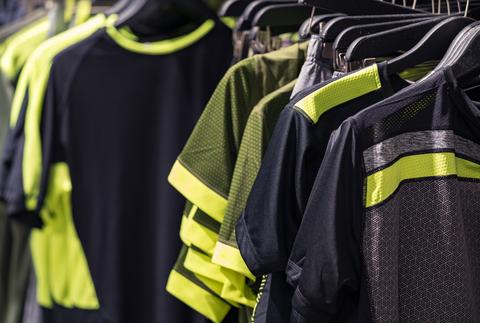

In January of 2020, the last thing on the minds of event planners was an international pandemic. Nonetheless, by May, experts at ESPN had already announced that they expected the coronavirus to cost the sports industry at least $12 billion.1 This was before Japan postponed the 2020 Summer Olympics to 2021, before the stay-at-home orders were lifted, before green phases began, and before people were talking about a second wave. Despite precautions, those early estimates turned out to be severely undercalculated. By May 2020, loss of revenue for tourism-related to youth sports alone reached $2.4 billion.2 By that time, everyone in the destination marketing industry knew: it was time to adapt.
I’ve seen some great examples of adaptation. In my hometown of Pittsburgh, the annual DICKS’s Pittsburgh Marathon joined a growing trend3 – it was re-launched as a virtual marathon. Clever marketers adopted the hashtag #movepittsburgh and encouraged runners to submit their times online. The result was more than 13,000 participants, with many participating on sidewalks and treadmills.
More recently, smaller local tournaments have begun again, but with caution. Turnout has been good, the weather was great and it was clear from the enthusiasm that people were excited to get back to sporting events. But even since then, there have been second waves, and people have begun to self-isolate again. Some states are looking at additional shutdowns.
There’s no telling how long this back-and-forth might take place. Of course, this isn’t the first time that the industry has had to react to an unexpected downswing in travel and tourism. After 9/11, destination marketing had to grapple with similar, fairly significant issues. In the nearly twenty years since that time, we’ve seen the birth of social media, as well as the expansion of the digital realm into our everyday lives. This means that while today’s challenge might be similar to the problems of post-9/11 sports tourism, we have many new solutions that didn’t previously exist. People see sports tournaments – and by association, sports merchandising – through a much more social lens now. Whether or not you have shifted your tournament’s branding strategy to adapt to the digital age, you will now need to respond to the age of COVID-19 as well.
Adapting Tactics
What does all of this mean, in essence, for merchandising? That’s largely determined by whether your event is virtual or live.
If you decide to go digital, or at least partially digital, you have a unique challenge. You will now have to create and undertake a fulfillment process to deliver merchandise to virtual attendees that would normally have been given away in person at your event. This added expense will obviously need to be absorbed somewhere. Fight the urge to save money by reducing the quality of your merchandise. Instead, consider using merchandise made from lighter, flatter materials to save on shipping. Fabrics will be a lot cheaper to ship than drinkware. There is no need to overdo it with something heavy if a shirt or hat will do just as well. According to merchology.com, popular event giveaway staples still include pens, shirts, tote bags and mini-chargers. These items are not only extremely popular, they are also easy to ship.
Ask yourself before you ship merchandise to participants: do you intend to house the items yourself? This might be the most economical option for you, especially if you have unused space. Or maybe it makes more sense to find a promotional products company that will ship items directly to cut out the middle step. Like in the marathon example, you will legitimize the experience for participants if they are sent a medal at the end because a virtual marathon won’t have a medal table or a finish line.
Obviously, many events are not going to be virtual. Don’t assume this means that you are exempt from meeting your attendees online! Are you worried about dealing with reduced attendance numbers at your event this year? Most event organizers will be. Naturally, that would mean less engagement with your brand, and fewer people exposed to and sharing your merchandise. Smart organizers will do everything they can to make sure that their attendees are still making as much noise as possible on social media.
Leveraging Social Media
And once you have engaged your audience, don’t let handing of the merch be the end of the conversation! Once people receive their shirts, hats, water bottles or other items, make sure they appear on social media coverage of the event in a subtle way. If your merchandise is an advertisement for your brand, then social media shares that include your logo next to smiling faces are valuable free advertising impressions. Consider this: people at your event are going to be telling their stories to their followers either way. Your job is to invite people to include your brand as part of their positive experience to grow your audience.
One way to do this is to announce that you’re holding a contest. Encourage your attendees to show off their merchandise. Announce well before the event that social media photos using the event’s hashtag and featuring the event’s logo will be awarded prizes at random. This is something that clothing companies do to get attention all the time.4 If possible, announce the winners publicly throughout the day, both through social media and the event’s PA system. Set up a station near the announcers’ table to receive contest winners. Allow winners to meet athletes or ask a local destination marketing organization if they could provide some giveaways. They might have coupons to local businesses or even more freebies you can take advantage of.
Working with Participants’ Worries
No matter how excited you get your attendees, and no matter how energized they may be to attend your event, it’s likely that many may still have some apprehension about crowds for the near future.
Why not use your merchandising to improve their experience? It is important to accommodate everyone at your events and making sure your attendees can attend at the capacity they are comfortable with is crucial.
Aside from t-shirts and awards, the most popular merchandise at events is often “lifestyle” products that have high usability. If your goal is to provide people at your event with what they need to enjoy themselves comfortably, you might want to consider brand merchandized bottles of hand sanitizer or branded packages of sanitizing wipes or even branded masks.
Even the most exuberant attendees who would normally be enthusiastically sharing hugs, high-fives and even drinks might be a lot more reserved these days. It is hard to guess what anyone will be comfortable with as far social distancing goes. In a recent article on PCMA.org5, David McMillin wrote about a solution to this concern that could be easily adopted by your event: using color codes to let others know their personal space preferences. Red wrist bands would mean “keep your distance,” yellow means “elbows only,” and green clears fellow attendees for hugs and high fives. Savvy merchandisers could think of many creative ways to work color codes into their merchandising, from wrist bands to t-shirts.
Adapting and Growing
The point is, despite COVID-19, life goes on. In marketing as well as in merchandising, you don’t want to stand still and let the world pass you by. You need to adapt to changing times. The challenges you can overcome with a stronger merchant supply chain plan and well-developed social media plan are going to serve your business moving forward, regardless. Your merchandising, just like your marketing, cannot get sidelined. In fact, your merchandising and your marketing need to go hand in hand. That’s how you inspire your attendees to include you in their social media stories. In 2020, and as you plan for your 2021 tournaments, take this opportunity to make sure your merchandise is going the extra mile for your brand. SDM
1Fainaru, Steve, et al. “Sudden Vanishing of Sports Due to Coronavirus Will Cost at Least $12 Billion, Analysis Says.” ESPN, ESPN Internet Ventures, 1 May 2020, www.espn.com/espn/otl/story/_/id/29110487/sudden-vanishing-sports-due-coronavirus-cost-least-12-billion-analysis-says.
2Gough, Christina. Revenue Lost in Sports Due to Coronavirus 2020. 18 June 2020, www.statista.com/statistics/1114808/coronwww.statista.com/statistics/1114808/coronavirus-sports-revenue-loss/avirus-sports-revenue-loss/.
3CBS Pittsburgh. “More Than 13,000 Runners Preparing For Virtual DICK’s Sporting Good’s Pittsburgh Marathon.” CBS Pittsburgh, CBS Pittsburgh, 1 May 2020, pittsburgh.cbslocal.com/2020/05/01/pittsburgh-virtual-marathon-2020/.
4Heidorn, C. (2020). Top 10 Trade Show Giveaways for 2020: Custom Logo Promotional Items. Retrieved August 25, 2020, from https://www.merchology.com/pages/top-10-trade-show-giveaways-for-2020
5McMillin, D. (2020, July 02). Social Distancing Solution: Wristbands Do the Talking for Attendees. Retrieved August 25, 2020, from https://www.pcma.org/social-distancing-solution-wristbands-attendees/

